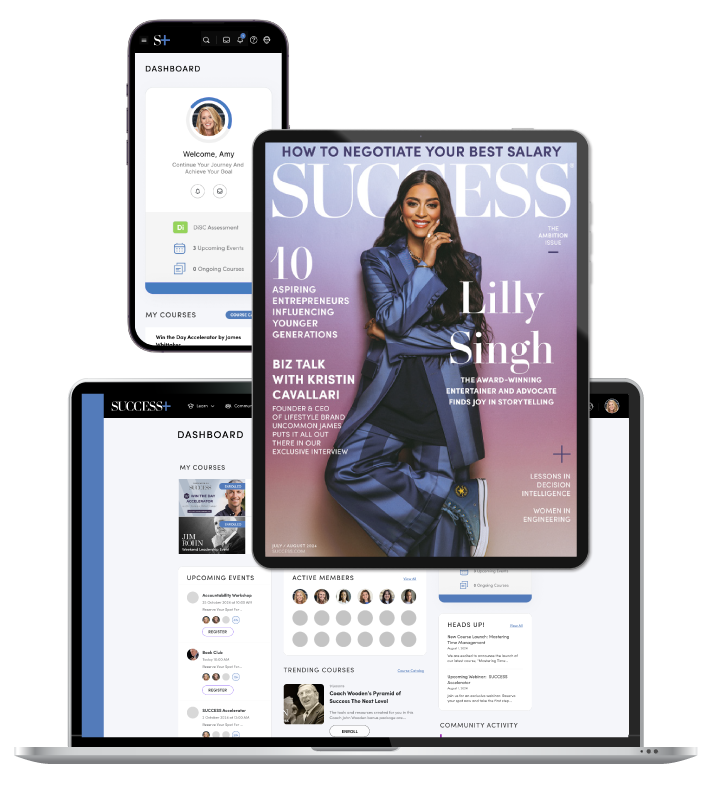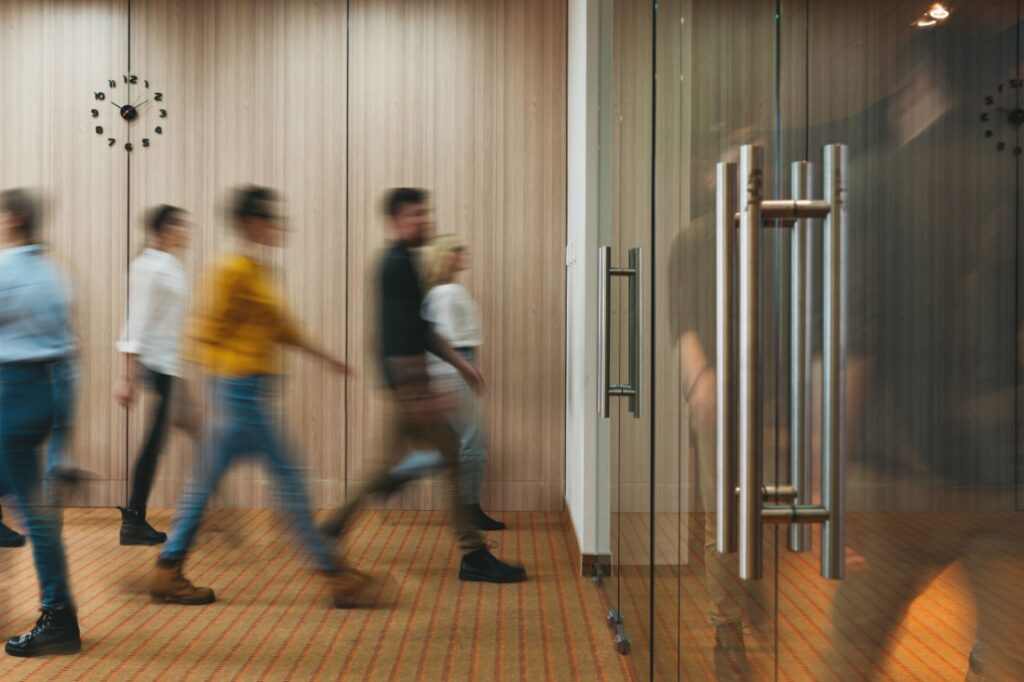What will your workday look like in a decade? If you’re lucky enough to be nearing retirement, your answer might be “nonexistent.” For the rest of us, however, the future of employment could look a whole lot different, at least according to LinkedIn Co-Founder Reid Hoffman. In 2017, he predicted that the majority of jobs would be flexible within the next 30 years.
During the COVID-19 pandemic, we saw this play out; many workers shifted to flexible work, drastically shifting to remote work trends as the new norm in the workplace. Many companies felt thrown in the deep end, but also quickly began troubleshooting issues created by these new working arrangements and adapting to them, continuing to home in on those risks, challenges and solutions today.

But before we brush him off as just one voice among the future of work prediction makers, let’s look back at 1997.
“Hoffman’s past predictions are spooky,” one LinkedIn writer shares, listing three of his other projections: “Predicted social networks would change the world (LinkedIn sold for $26B). Saw the sharing economy coming (Early Airbnb investor). Called the AI revolution years before ChatGPT.”
Here are four major predictions we expect to see for the future of traditional work:
- Traditional 9-to-5 jobs will decline, and flexible work models will become more dominant.
- The gig economy will continue to grow, and hybrid work environments will remain in demand.
- AI will majorly impact automation, productivity and talent acquisition challenges.
- There will be a stronger focus on work-life balance strategies.
The Decline of the Traditional 9-to-5 and the Rise of Flexible Work Models
Despite the many recent announcements of some companies pushing back-to-the-office mandates, the rigid 9-to-5 work model continues to lose relevance. There is no stopping the momentum of demand for flexible work.
Specifically, employees demand flexible hours, asynchronous collaboration and results-based work. Companies prioritizing attracting the best talent must consider this in their recruiting and working strategy going forward.
The Harvard Business Review reports that “independent work is becoming more of a norm in the U.S. economy.” There has been such a decline in 9-to-5 jobs that workers have long noticed how tenuous the situation is. MBO Partners conducted a survey that found that 65% of full-time independent (self-employed/freelance) workers “feel more secure working independently” than they would in a full-time 9-to-5 job.
This is a seismic shift from the mindset of decades ago when you’d be hard-pressed to find anyone who would say it’s more secure to be a freelancer than to have a full-time 9-to-5 job. There is a good reason for this. Workers are becoming increasingly skeptical about job security in any job or position, including 9-to-5 ones.
Cultural and Generational Shifts
Like so many other significant shifts in the workplace, there are cultural and generational shifts behind these transformations. MNP reports that providing “flexible work options” is one of the most important steps workplaces can take in creating conditions to attract top talent. Younger generations have a different idea of what work should look like. They explain that the demand for flexible work gets higher by generation, with the youngest workers prioritizing flexibility the most.
However, there are workers in every generation who want (and even need) flexible work, including asynchronous work arrangements. Offering these options will make your workplace more attractive to applicants.
The Gig Economy Growth and Hybrid Work Environments
“Gig work” is contract work, often project-based, that lasts for a limited time. Even when gig workers find longer-term work, it can still end at any time. Today, workers continue to appreciate how the gig economy allows them to work on their own terms, finding projects and earning money on multiple projects and platforms of their choosing.
Unlike some traditional 9-to-5 jobs, results are the primary focus of gig work. When a company hires you for a gig, they focus on whether you can give them the work and results they’ve contracted you to deliver, often creating a sense of freedom from workplace politics and pointless meetings.
Gig work is gaining traction because it’s flexible, allowing workers to collaborate asynchronously and focus on results. The ability for workers to self-manage will be key to the future of work.
Flexibility Wins Out
In 2020, a study by the ADP Research Institute found that more than 70% of gig workers were working contract roles by choice, often because they preferred the flexibility. It found that 44% of gig workers cited flexibility or work-life balance as the top reason they did contract work. Perhaps even more significantly, it discovered that “one in six workers in organizations is a gig worker.”
An Upwork study from 2021 found that 47% of people working remotely were freelancers. It also found that only 37% of freelancers were required to work entirely in person, while 54% of non-freelancers did 100% of their work in person.
Several studies have established that hybrid workers are just as productive as those working in an office setting. This makes it essential for competitive companies hoping to recruit top talent to provide a hybrid or remote work option.
AI in the Workplace: Automation, Productivity and Talent Acquisition Challenges
AI and automation are reshaping many job roles. For example, repetitive tasks can be automated, placing higher value on human abilities like empathy, strategic thinking and creativity.
As a result, upskilling, reskilling and lifelong learning will become more important than ever in the future workplace. Many companies’ expanding use of AI in the workplace will play a significant part in this.
Using AI to Your Advantage
These rapidly evolving circumstances are, understandably, intimidating and frightening for many workers. But it can help to view AI as a collaborator, rather than a threat. For instance, AI can help reduce the number of meetings needed due to its ability to quickly summarize messages.
While many workers worry that AI is a threat to their jobs, AI alone isn’t the primary factor they should worry about. According to the Economic Policy Institute, the most significant threat to workers is “unbalanced employer power in the labor market,” not AI. They point out that AI could “be used to boost productivity and make workers’ pay higher and their work lives easier.”
Talent Acquisition Challenges
When it comes to talent acquisition challenges, many companies are using AI to help streamline their HR departments and recruitment processes. AI can even help employers better understand the people who work for them.
The explosive growth of AI means that some of the tasks workers were once responsible for will now be completed without hiring. An inevitable consequence of that will be that 9-to-5 jobs may be harder to come by, and most workers will make their income with two or more gigs.
Work-Life Balance Strategies in the Future Workplace
Work-life balance has become more of a top priority for workers than ever before, and is especially valuable to people such as parents and those who simply demand more control over how they spend and organize their time.
As a result, companies that incorporate work-life balance into their policies, culture and retention strategies are better suited to attract and retain top talent. This may include reorganizing their benefits, PTO (paid time off) and daily workflows.
As Staffing Industry Analysts (SIA) explains, “Time off is critical to finding a healthy work-life balance, and when employees genuinely don’t want to leave the office, the value of their hard-earned PTO shouldn’t go to waste.” SIA also states that “workplace culture plays a major role” in ensuring employees take the paid time off they need.
The ability to work remotely and asynchronously gives workers more flexibility than they experience when they have to be in an office for a 9-to-5. The U.S. Career Institute found that 65% of employees prefer to work remotely 100% of the time. It also found that only 16% of U.S. companies are 100% remote, even though 75 million U.S. workers have careers they could realistically do remotely.
Embracing the Future of Employment
Of course, the strength of these changes will vary among industries and companies. You might notice all these changes in some fields, while in others, it may take longer.
It’s a brave new world, and it’s all too easy to feel overwhelmed. But preparing for these changes sets you ahead of the curve. Remember to stay curious, adaptable and ready to embrace the future of work.
This article was updated in May 2025. Photo by LeonidKos/Shutterstock.










